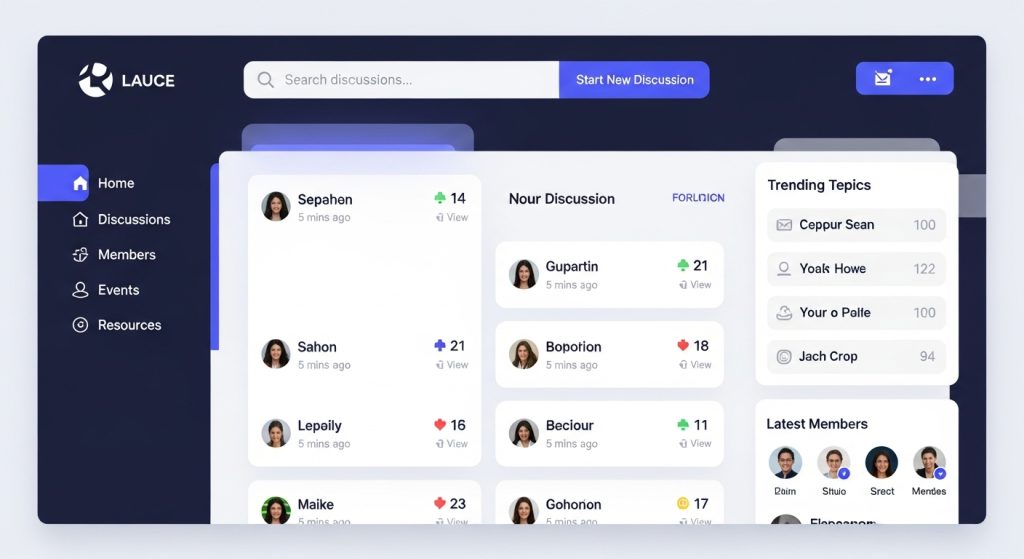
Introduction
Community interaction is the foundation of connection, trust, and shared growth. It represents the ongoing dialogue between individuals, organizations, and society — a continuous exchange of ideas, experiences, and values that strengthens the fabric of a community. In a world where technology and culture evolve rapidly, meaningful interaction helps bridge divides, foster empathy, and create a sense of belonging.
At its core, community interaction is not just about communication — it is about building relationships that inspire collective action. Through active participation and collaboration, communities transform from collections of individuals into unified, empowered networks capable of achieving lasting change.
Purpose and Importance
The purpose of community interaction is to bring people together around common goals, values, and visions. It creates opportunities for dialogue, collaboration, and learning, enabling communities to thrive socially, culturally, and economically.
Strong community interaction:
- Encourages inclusion and equality by ensuring all voices are heard.
- Builds mutual understanding through empathy and active listening.
- Fosters cooperation and volunteerism for shared causes.
- Strengthens civic engagement and social responsibility.
- Supports innovation and collective problem-solving.
When people feel connected to their community, they are more likely to contribute positively, participate in initiatives, and take ownership of local or organizational challenges.
Core Principles
Effective community interaction is guided by several essential principles:
- Inclusivity – Welcoming diversity and respecting all perspectives.
- Transparency – Building trust through open and honest communication.
- Empowerment – Enabling individuals to take active roles in community decisions.
- Collaboration – Working together to achieve common objectives.
- Sustainability – Ensuring long-term engagement through consistent support and meaningful outcomes.
These principles ensure that community interaction remains purposeful, ethical, and results-oriented.
Forms of Community Interaction
Community interaction can take many forms, each adapted to different goals and environments:
- Public Forums and Dialogues – Town halls, group discussions, and consultation sessions that encourage open expression and shared decision-making.
- Workshops and Training Programs – Educational sessions that promote skill development, leadership, and awareness.
- Volunteer and Outreach Activities – Social initiatives that connect individuals with opportunities to serve and support their communities.
- Digital Engagement – Online platforms, social media, and virtual communities that extend participation beyond geographical limits.
- Collaborative Projects – Partnerships between local groups, NGOs, and businesses to address community needs and social challenges.
Benefits and Impact
Community interaction generates benefits that extend beyond the individual:
- Enhanced Social Cohesion – Strengthens the bonds between community members.
- Knowledge Sharing – Facilitates learning and the exchange of valuable insights.
- Collective Empowerment – Encourages proactive participation and leadership.
- Innovation – Brings together diverse ideas to generate creative solutions.
- Resilience – Builds communities that can adapt to change and overcome challenges together.
By investing in meaningful interaction, organizations and societies cultivate resilience, creativity, and unity — qualities essential for sustainable progress.
Technology and the Modern Community
In today’s interconnected world, technology has expanded the possibilities of community interaction. Virtual events, social networks, and collaborative platforms allow people from different regions and backgrounds to engage in shared discussions and projects.
Digital tools enable transparency, accessibility, and immediacy — allowing communities to grow faster and act more effectively. However, true connection still depends on authentic human interaction, empathy, and shared values.
Our Commitment
We are committed to creating environments where people feel connected, valued, and inspired to contribute. Our goal is to transform communication into collaboration — and collaboration into impact.
Through community interaction, we build partnerships that drive change, amplify voices, and promote understanding. Every conversation, project, and event is an opportunity to strengthen unity and foster positive social transformation.
Conclusion
Community interaction is not a one-time effort — it is a continuous journey toward inclusion, empowerment, and shared purpose. When individuals come together to listen, learn, and lead, communities flourish.
By embracing diversity and encouraging participation, we create spaces where everyone belongs and contributes to a better, more connected world.





